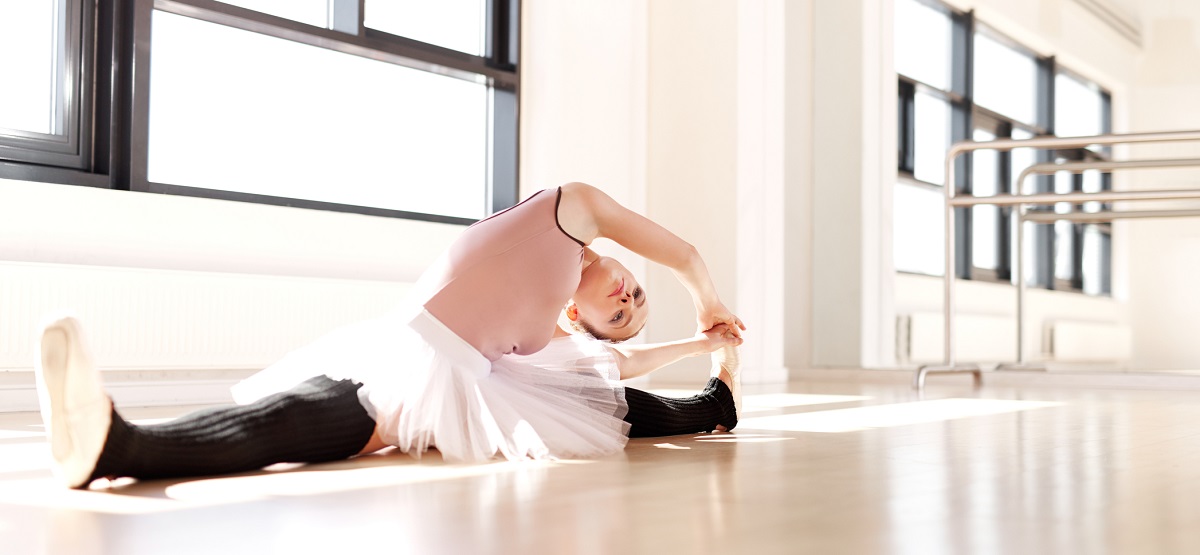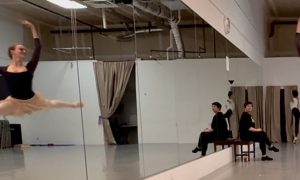Has your stretching started to feel like the same old routine to you? Have you injured yourself, or feel nagging strain, while doing so? Do you wonder if you’re overdoing it? Many dancers constantly stretch to push themselves past the limits of their flexibility, in hopes of expanding their artistry and physical capabilities. Those are certainly worthwhile, and important, goals – yet there is indeed such a thing as overstretching. There’s also a way to go about it that can, ironically enough, limit flexibility through causing unnecessary damage to muscles.
In another mind-body aspect, doing the same stretching routing over and over – without regard to one’s unique state on any given day – can lead to “going through the motions”. We can come to stretch in ways that we lose sight of artistry and mindful connections with our bodies, things we wanted to get from stretching in the first place. The following tips and guidelines for stretching can help us avoid these unfortunate habits.
#1. Set up for success with your preparation.
Some dancers are so intent on getting into a deep stretch that they miss setting up their stretches in ways that lead to the greatest gains (flexibility) with smallest risks (injury). Start with a strong base (in your feet if standing, in your pelvis if sitting). Starting from a stable place will keep you safe and secure throughout the stretch. Next, pay attention to the pathway of how you enter into a stretch. For instance, you’ve likely heard a ballet teacher give a correction (to you or a fellow student) to lift up before arching back into a cambré derrière. Not only will that result in a bigger, more beautiful backward arch, but it will also keep your spinal vertebrae safe. That serves both your body and the aesthetic result. In all cases, by paying attention to how you enter a stretch, you’ll stay kind to your body and contribute to your own artistry.
#2. Tune into your breath.
While stretching, try to lengthen your spine as you breathe in. As your breathe out, try to sink deeper into the stretch (or, in other words, closer to where you are stretching – such as your thighs in a forward fold or to the barre in a stretch à la seconde). Try to maintain both the length and deeper positioning of the spine after that breath cycle as you begin the next breath in. That achieved, you can keep adding depth and length with each breath in and breath out. Before you know it, you’ll have most likely gotten deeper and longer into a stretch than you thought you could – on your body’s timing, rather than rushing it (read: risk of injury!). Our bodies are remarkably intelligent, and it doesn’t help to force them to places they’re not ready to go. On the other hand, amazing things can happen when we work with, rather than against, our bodies.
#3. Add balance and variety.
The most effective, healthiest stretching routine will give all parts of the body a gentle challenge. For instance, try to make sure to include sidebends, a straddle variation or two, forward bends, twists and backbends into your stretching. That way, everything in your dancing instrument will get a good stretch, and nothing will be stretched to the point of injury and/or overuse. With all of those things to address, it can feel like we’re running out of stretching tools in our toolkits. Cross-training experiences and other extra resources can help broaden your stretching repertoire. Do you have a friend who is a competitive runner? Ask what he/she does to stretch before a meet. Runners’ bodies have different needs before performance than dancers’ bodies do, but you might just learn something that you could adapt to enhance your stretching regimen. In the same way, take a yoga, Pilates or Gyrokinesis class to see what those disciplines have to offer. Read up on anatomy, mind-body medicine and what other dancers do to keep their instruments in tip-top shape. There’s always more to learn. That way, your stretching routine will never become old and tired – and you won’t injure yourself just from not staying mindfully aware of your body’s messages.
#4. Give it a break.
When we stretch, we are basically making tiny tears in our muscles. When the fibers heal and re-connect, they are longer than they were before. Our bodies can handle that, but not without a break. If we constantly stretch, then scar tissue can build. That can cause soreness and muscle fatigue – not friends of dancers. Worse, scar-tissue build-up can actually prevent further stretching, and even make muscles tighter than they were originally. That means that over-doing it, besides causing pain and aggravation, takes away the results that we worked for originally! We should then take at least one day a week off from stretching, to let muscles heal in their new longer, stronger positions. Use that time to expand your other dancer strengths, such as your knowledge of ballet terminology, dance history, or network of choreographers and fellow dance artists.
If we can stick to these guidelines, and other ones I haven’t discussed, we can avoid falling into stretching habits that hurt our bodies and bore our minds. Remember that, yes, your body is your precious instrument, but your brain is in your body, too. As we stretch, let’s work our minds and our bodies.
By Kathryn Boland of Dance Informa.













